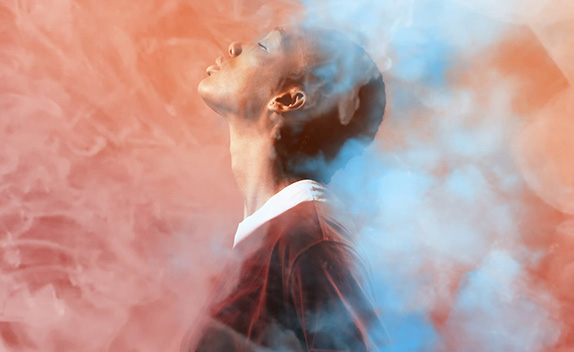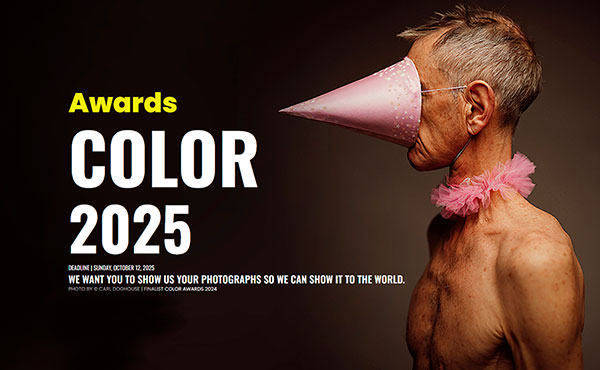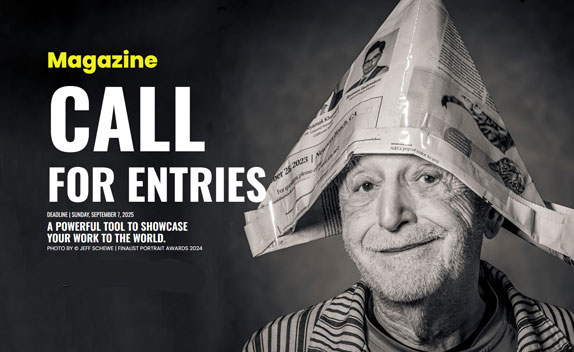On a summer evening in Orivesi, Finland, photographer Markku Lahdesmaki stepped into the magical world of Circus Tähti. From backstage shadows to center-ring brilliance, his lens captured the performers’ quiet moments and dazzling acts in a rare behind-the-scenes glimpse of life under the big top.
HomeAuthor
Dodho Magazine
Born in Boston and self-taught behind the lens, Robert Welsh captures the overlooked beauty of urban neighborhoods, from San Francisco’s Chinatown to the streets of India, weaving memory, identity, and daily life into timeless photographic essays.
Leanne Trivett S. reflects on creating honest, emotional imagery in a visually saturated world, embracing authenticity, slowness, and connection as acts of resistance.
In Due West Alexa Cushing reimagines Los Angeles as a fractured dreamscape where glamour and dissonance coexist in surreal harmony.
Japan Within, Home captures intimate moments and timeless gestures of Japanese daily life, reflecting quiet connections and subtle beauty.
In The Forgotten Places, Frédéric Demeuse takes us deep into the world’s last untouched forests, primeval ecosystems where wild beauty reigns and serenity emerges from natural chaos. Over more than a decade, he has captured the living poetry of cloud forests, temperate rainforests, and remote woodlands across Europe, Central America, and Africa.
Indonesian photographer Hardijanto Budiman, known as Hardibudi, shares his thoughts on how artificial intelligence is transforming photography. In this interview, he reflects on authorship, emotion, and the irreplaceable human touch behind every image.
Discover Clark James Mishler’s “Portrait-a-Day” project, a six-year glimpse into Anchorage life, climate-driven style, and the diverse faces of Alaska.
In this interview, photographer Florence Gallez reflects on the meaning of creating images in an age of visual saturation. She explores themes like visibility, silence, authorship, and the emotional dimension of photography as a form of quiet resistance in a world of constant exposure.
In Eternal Family, South Korean photographer Byun Soonchoel uses cutting-edge imaging technology to virtually reunite families separated by the Korean War. Blending documentary intent with digital reconstruction, his portraits offer a haunting vision of what could have been, where memory, absence, and technology converge to heal invisible wounds.
Nan Goldin never staged a version of herself. Her photographs were not declarations, but confessions, raw, bruised, trembling. She used the camera not to construct identity but to survive it. In a world obsessed with curating imperfections for aesthetic effect, Goldin exposed the cost of real intimacy.
French photographer Francis Malapris presents Aquatic, a visionary series capturing feminine energy through weightless portraits that blend beauty, strength, and emotion. Born from dreams, introspection, and ritual, the project explores rebirth, resilience, and the intimate power of transformation.
Vivian Maier spent her life creating in silence, walking the streets with a camera but no desire for recognition. In an age that equates visibility with value, her refusal to share feels almost radical. What if she was right? What if the true act of creative freedom is not to be seen, not to perform, but to observe quietly and trust the work to speak for itself, eventually, or maybe never?
In Song of My Selves, Michael S. Honegger blends theatrical self-portraiture with dreamlike black and white imagery to explore queer identity, memory, and inner transformation. Guided by Arno Minkkinen’s influence, Honegger steps into multiple roles, using mirrors, masks, and reflections to reveal the complex truth behind the self.
Henri Cartier-Bresson taught us to wait for the decisive moment, but in today’s image deluge that quiet fraction of a second risks drowning in algorithms and selfie rituals. This piece argues that the French master would decline to photograph the polished influencer latte, the staged disaster clip, the AI-fabricated sunset and the disposable story that vanishes after a day.
This series documents the struggle for survival in eastern Ukraine, where war with Russia rages unabated. Life is dominated by the front—a death zone stretching up to 30 kilometers inland, where artillery fires relentlessly and tanks thunder through the night.
The aesthetics of error embrace glitches, blurs, and corrupted files not as flaws but as visual metaphors for a world that no longer believes in polished truths. In celebrating unpredictability, contemporary photography reminds us that beauty still lives where the algorithm breaks.
In this interview, photographer Paola Francesca Barone reflects on the meaning of creating images in an age of visual saturation. She explores themes like visibility, silence, authorship, and the emotional dimension of photography as a form of quiet resistance in a world of constant exposure.
The world’s first photograph was almost erased by its own inventor. Niépce didn’t call it art, didn’t know he’d made history, and yet his faded rooftop scene quietly marked the beginning of how we capture and remember the world.
Erwin Recinos’ Earthlink series captures the soul of Southern California through vivid photographic postcards taken along the Metrolink rail system. Created for the Earth Day 2023 campaign “A Picture is Worth a Thousand Rides,” the series blends themes of sustainability, community, and urban identity. With a decade-long career documenting Los Angeles culture, Recinos offers a personal and timely vision of places that may soon be transformed by time and progress.
Silence in photography is not absence, but presence tuned just below the surface. It is what happens when a frame stops explaining and begins to suggest. The image no longer performs, it invites. A viewer pauses, leans in, and something shifts. That quiet tension, hard to measure yet deeply felt, is what gives certain photographs their lasting weight. They do not need to shout to leave a mark — they simply know when not to speak.
Born in Beijing, photographer Chris Yan captures the soul of a city suspended between centuries. Through his lens, tradition and modernity collide in poetic harmony, revealing the silent stories of a metropolis in constant transformation.
A Leica is not just a camera, it is a way of being in the world. From its nearly silent shutter to the ritual of loading film, every detail is designed to make the photographer an active part of the image. It gives you nothing for free. It forces you to look, to wait, to earn the photograph. And perhaps for that reason, every click carries a different weight. You do not shoot out of habit, you shoot with intent.
Gina walks into the night each evening, wearing high heels that bruise her feet and a wig that helps her become someone else. She doesn’t sell her body out of choice but out of necessity, shaped by years of silence, abuse, and abandonment. What began as a survival mechanism has become a life lived in the alleys of Luanda, where fleeting intimacy pays for food and fleeting highs provide relief.
Every image is both a gift from the city and a possible intrusion into someone’s invisible shield. Street photography walks that delicate edge where a poetic moment can suddenly become an intrusive gesture. Capturing the invisible demands sensitivity, but also an ethical awareness that goes beyond the shutter.
In Lolita Dreams, Chinese visual artist Tianhu Yuan documents the transformation of the Lolita fashion subculture in China, highlighting how its participants have distanced it from Western misconceptions. Through intimate portraits and interviews, he reveals a world where cuteness, elegance, and femininity become tools for self-expression, cultural reinterpretation, and identity beyond the Nabokovian narrative.
Elliott Erwitt may be known for his sharp wit and iconic dog portraits, but behind the humor lies a story full of unexpected turns. From mopping floors to pay for film school to directing comedy shorts for HBO and inventing a fake artist to mock the contemporary art world, Erwitt’s career is a masterclass in blending discipline with irreverence.
From June 13 to October 12, 2025, the elegant spa town of Baden near Vienna becomes something extraordinary: an open-air museum stretching over seven kilometers. The La Gacilly-Baden Photo Festival returns for its eighth edition, turning the streets, parks, and gardens into a massive gallery of over 1,500 large-format images.
In a world saturated with images, the real casualty is not photography but our ability to truly see. The constant scroll, the dopamine-driven tap, the avalanche of visual content have numbed our eyes to the subtle and the slow. We no longer look, we skim.
Icebreaker is Liam Man’s night photography series documenting glaciers and abandoned ski resorts, in support of the International Year of Glaciers 2025 and the urgent fight against climate change.
Dodho Magazine partnered with GuruShots "The Worlds Greatest Photo Game" in a photo challenge contest titled "Mostly White" Over 100,000 photos were submitted. GuruShots is a platform for people who love taking photos. GuruShots believes that taking photos is an amazing way to express one’s self.
From 7 July to 5 October 2025, the Provençal city of Arles will once again become the world capital of photography with the 56th edition of Les Rencontres d’Arles. Under the theme “Disobedient Images”, the festival offers more than forty exhibitions spread across Romanesque chapels, former factories and other heritage sites that converse with today’s photographic creation.
Upon arriving in Cuba, you’re greeted by iconic classic American cars that seem to freeze time. Due to the U.S. embargo, Cubans have kept these vehicles running “one piece at a time,” creatively mixing parts from different years and models. This mechanical legacy has become a national treasure: from meticulously restored taxis for tourists to working cars with a unique patina that tells decades of makeshift repairs.
Douglas Stockdale’s Memory Pods reflects on aging, memory, and Alzheimer’s through semi-abstract photographs of Aloe Vera flowers and seed pods. The images mirror life’s progression from vibrant youth to the fading of memory offering a poetic meditation on the emotional and physical impact of dementia.
Photography has never been neutral, but in today’s wars, the camera feels less like an observing eye and more like a precision-guided narrative device. On the outskirts of Kharkiv, a Ukrainian soldier launches a fresh drone with a GoPro the size of a fist.
Elusive is a photographic project by Emilie Möri that invites viewers to immerse themselves in a world of illusion and escape, where imagination is the only limit. Through digital collages, minimalist compositions, and natural light, Möri creates images that evoke silence, mystery, and a delicate balance between reality and dream
Gear Syndrome infiltrates every photographer’s mind, replacing vision with specs. The cycle of upgrades promises creativity but drains time and erodes authorship. Great photography is built on curiosity, not gear.
Robert Mapplethorpe’s legacy is often reduced to leather, lilies, and controversy, but behind the iconic images lies a far more complex figure. From Catholic altars built in his childhood bedroom to secret collaborations with the New York City Ballet, these ten lesser-known facts reveal an artist obsessed not just with perfection, but with mystery, control, and the unexpected poetry of imperfection.
Deciding whether a naked body deserves a marble pedestal or a veil of censorship has never been a quiet task. Every gallery that displays a reclining Venus or a photographic nude is the tip of an iceberg shaped by centuries of moral panic, aesthetic canon, and institutional fear.
From 16 to 22 June 2025, Volkshaus Basel (Rebgasse 12–14) hosts the tenth edition of photo basel, Switzerland’s first and only international art fair dedicated exclusively to photography.
From June 7 to 22, 2025, New York City will host the 14th edition of Photoville, a free outdoor photography festival that transforms parks and public spaces into a vast, open-air gallery.
We are proud to reveal the names of the 100 photographers who have been honored as winners and finalists of the 2025 Portrait Awards, a recognition that affirms their remarkable standing in today’s photographic landscape.
In March 2024, Regina Anzenberger returned to Tasmania — a place that has deeply shaped her artistic journey since her first visit back in 1989. This island, with its wild landscapes and unique natural forms, once again became an endless source of inspiration. During her stay, Anzenberger captured everything that moved her: riverbeds, stones, leaves, trees, and mysterious seahorses.
Dodho Magazine partnered with GuruShots "The Worlds Greatest Photo Game" in a photo challenge contest titled "Night Photography" Over 100,000 photos were submitted. GuruShots is a platform for people who love taking photos. GuruShots believes that taking photos is an amazing way to express one’s self.
This photo series is called "Louzolo," which means "Love" in Kikongo, a local Congolese language. The series explores love languages in Congolese society—the dos and don’ts, what is acceptable and what is not. How much is too much? How can one express love in public?
Art has the power to uncover realities that often remain hidden. With Silent Scream, photographer and writer Henriëtte van Gasteren raises her voice against the taboo of sexual abuse, turning every page of her book into an intimate space that invites reflection and action.
Discover the inspiring story of France Leclerc, an independent photographer who has transformed her passion for academia and travel into a unique form of visual storytelling.
Choice by Inga Makeyeva and Kamila Dąbrowska: A Powerful Photobook on Consumerism and Sustainability
"Choice" is a photobook created by Inga Makeyeva and Kamila Dąbrowska that explores the impact of consumerism and sustainability. Through a carefully curated series of images, the project invites reflection on consumer culture and encourages more conscious alternatives.





